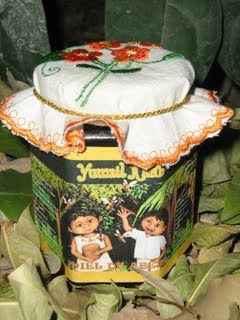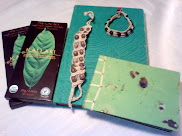 D
During that same conversation with Ingeniera Victoria today, she gave me a sample of chicle (natural chewing gum) to try. Like honey, chicle is one of those products that you could produce forever with minimal effect on the forest. I've seen tall, strong, healthy chicozapote trees with more than 50 hatch marks on them from where they've been tapped. Not only that, but the tree is relatively common and regenerats on its own when the forest is cut.
Chicle has a really interesting history on the Yucatan Penninsula. Used since the time of the Ancient Mayans in its raw, unsweetened form, it stayed relatively unknown to the outside world until an American, who was actually trying to make a new kind of rubber, ended up with a huge shipment of chicle that he had no idea what to do with. Eventually he added sugar to the stuff, and modern chewing gum was born. The industry grew explosively, and brought a lot of money to the areas now known as Quintana Roo, Campeche, and Yucatan.
Everything was going dandy until someone figured out how to make synthetic chewing gum, and since then the chicleros, who venture into the jungle for weeks at a time to tap chicle, have seen their numbers and their profits dwindle. Before coming to Carrillo, I had read about the efforts of the "
Consortio Chiclero" (Chiclero Consorsium) to revitalize the industry by selling organic chewing gum in the UK. The Consorcio claims to represent the intrests of the chicleros, but Victoria thinks they're in it for the money* and has been battling with them to raise the prices they pay to the Chicleros.
One way to do that would be to find new, direct markets for chicle and sell a finished product rather than bricks of raw material. To that end, Victoria showed me a little prototype, with three balls of chicle individually wrapped like candies and presentedin a little basket (another sustainable forest product). I grabbed one and was about to pop it in my mouth, when Victoria stopped me and warned that this was nothing like regular chewing gum, that it wasn't sweetened, that it would be dry and flaky at first and that I should only bite a little bit, because it would expand.
Needless to say she was right on all counts. To my uninitiated taste buds, the stuff was terribly plain. No matter how sustainable a product is, it also has to
taste good to be succesful. I grabbed the honey we had been looking at and mixed a capful with the chicle in my mouth. The two of them went great together, but the honey quickly dissapeared.
It gave me an idea, though. Earlier, Victoria had told me about another project to make honey carmels. Rather than try to mix the flavor into the chicle, a complex process that requires a bit of chemistry, why not just wrap a carmel in gum? It would be dry and flarvorless at first, but the carmel would give it flavor and last much longer than liquid honey.

We're gonna have to try it.
--
*This is just one person's opinion. I'm not sure as to the intentions of the group, but I still feel that without them there would perhaps be a lot fewer chicleros around... stay tuned as I dig deeper into the issue.
 right now (probably talking to even bigger head honchos) one of his students, Hector, is doing the training today. Watching this 19 year old kid teach 40 year old men how to increase the value of their wood was an incredible experience - the kid is good.
right now (probably talking to even bigger head honchos) one of his students, Hector, is doing the training today. Watching this 19 year old kid teach 40 year old men how to increase the value of their wood was an incredible experience - the kid is good.








